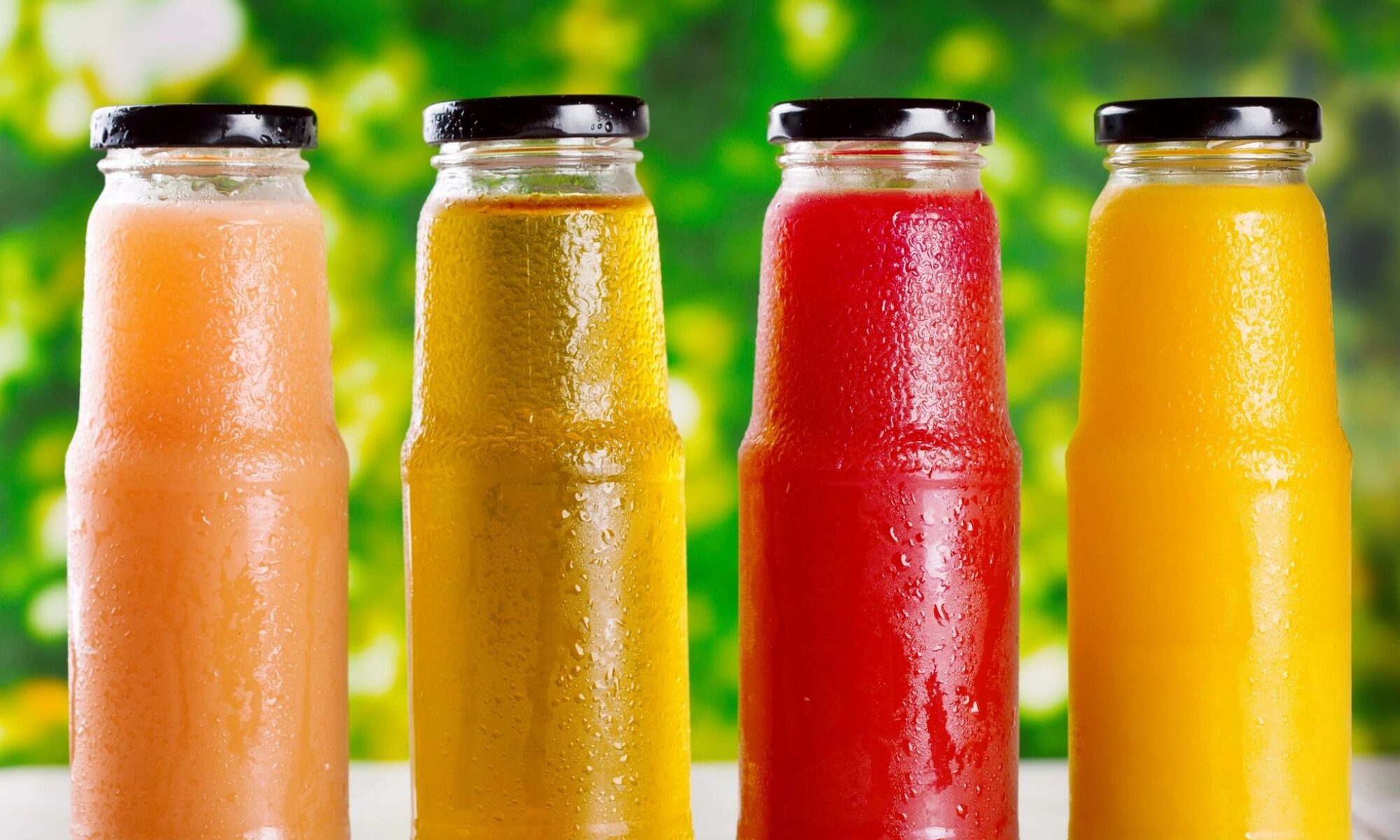The Great Recycling Con Job?

We are all today brought up with the belief that recycling is important. Experts, people of power, and organizations constantly tell us that recycling is vital if we want to ‘save the planet.’ However, the reality is far more complex, and there’s a lot more to it than you might think.
First of all, when we’re environmentally conscious, we are not only saving the planet, we are saving ourselves. It’s presumptuous to think that any of our individual actions can destroy or save the planet on a global level. We are just one living organism among a whole host of living organisms on Earth that has occupied it for millions of years. They all came and went, and the planet is still here. We are a mere second in the entire existence of the world.
In essence, all the bad we do to the planet will only lead to our own extinction, and the Earth will continue to exist long after our demise.
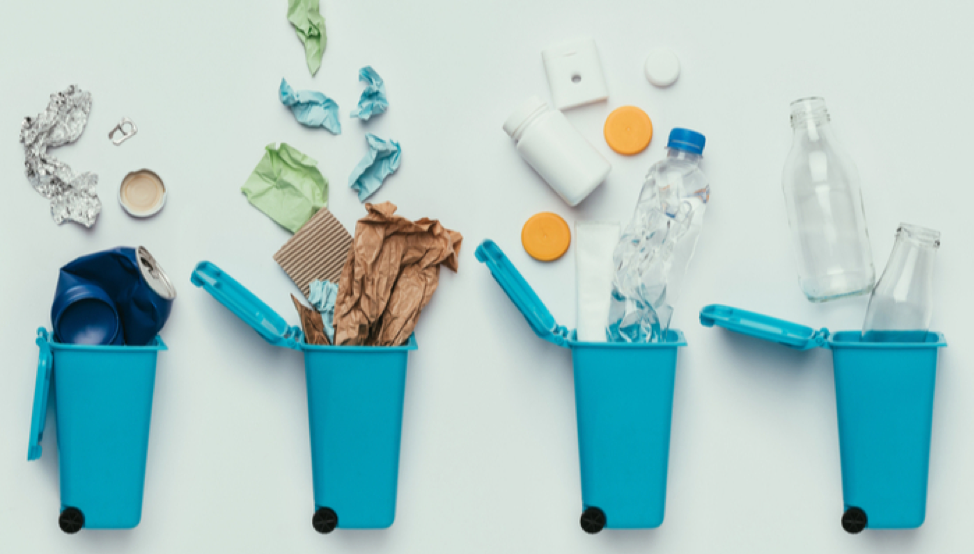
But besides the fact that we are not saving the planet when we recycle, we are also not really recycling. At least not in the way we are told. You want to know why? It’s a long story, but by the end of this post, you’ll know the real truth about recycling – the one no one will tell you.
Before we begin, you have to understand how recycling works in this day and age. Let’s begin:
How Recycling Works
Recycling has been around for long enough that the very word has come to symbolize one thing – turning something that is no longer useful anymore into something new instead of throwing it away. But how does the recycling process work exactly?
We, regular citizens, throw our recyclable waste into the eponymous blue bin instead of the regular garbage can. A recycling truck comes and picks up the recyclable waste we throw away. The truck then takes the garbage to the recycling plant. There, a very complicated process happens through which all of that garbage is turned into raw materials that can then be turned into something completely new.
Naturally, the process is not endless. Every recyclable product is usually down-cycled, which means that the new product can never be the same as the original. For example, when old newspapers are recycled, the paper will still contain residue ink, and the fibers within the paper will be much shorter and weaker. For that reason, the recycled material won’t be as desirable for the same product, but it can still be used for something else. The same thing happens with most other products. And after a couple of rounds through the recycling processes, the material will reach a point where it will no longer be usable. So, returning to our example of paper, after it’s been recycled repeatedly, the paper will no longer be usable and can only be discarded.
However, that doesn’t mean that some products can’t be up-cycled, because they can. By being smart, we can turn certain products into even better ones. For example, one could make a whole furniture piece out of old plastic or aluminum cans and a bunch of newspapers. Even old wood can be reused to create something new and equally beautiful. However, in the majority of cases, products are only down-cycled and eventually become unusable.
So, is that the truth about recycling? Well, yes, but there is still more to it. This is just a lesser-known fact about recycling, but there is still the big truth that will completely alter your opinion on recycling.
What the Companies Don’t Want You to Know About Recycling
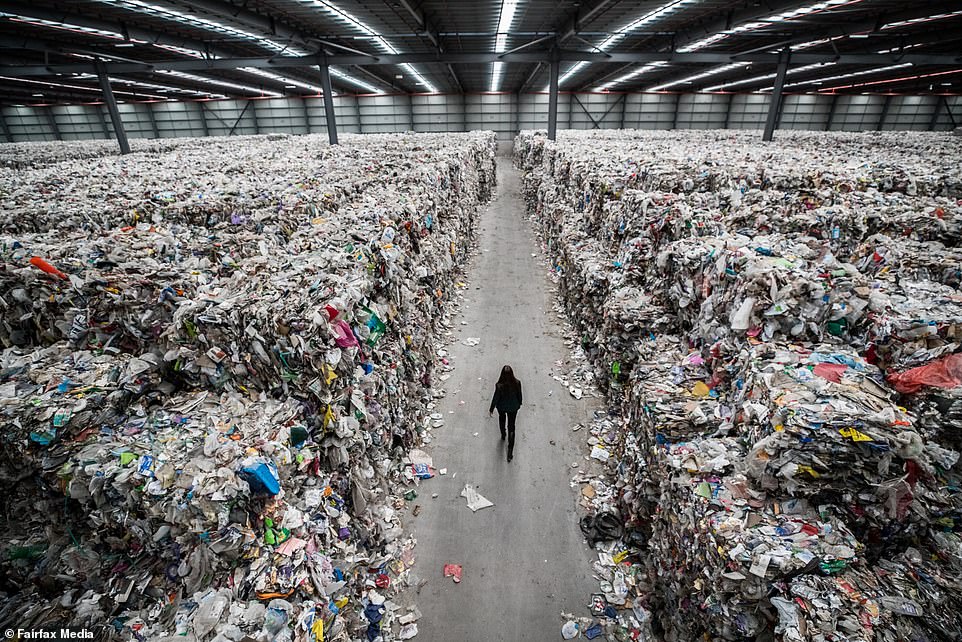
As it turns out, there is a lot that companies aren’t saying. It’s as if they are covering up the big truth, or several of them. The biggest one is the fact that not all plastic is recyclable. This is important because the biggest polluter among the waste we create is plastic. The main reason for this is the amount of plastic we create and how long it takes for it to decompose.
For example, it takes only two weeks for paper to decompose, which is why paper garbage is not a big problem in the world. The real problem is the amount of trees we chop down to make it. But I digress. Organic waste decomposes fairly quickly as well, from a few weeks to a couple of months. The real problem is the materials that take very long to decompose. For instance, nylon fabric takes up to 40 years to decompose, while rubber takes as much as 80 years.
But all of these relatively common products are nothing in comparison to plastic. It takes plastic a whopping 450 years to decompose! Once you take into account that plastic was invented in 1907, you quickly realize that none of the plastic that has ever been produced has decomposed by now. All of it is still here. And do you know how much of it? The latest study from 2017 states that 91% of all plastic never gets recycled. That’s around 8.3 billion metric tons of plastic, and all of it is now waste. What’s more, only 12% of all the plastic that has ever been made has been incinerated. The rest of it is polluting our land and the world’s oceans.
According to National Geographic, A whopping 91% of plastic isn’t recycled, even though we put them in those blue bins! Many mixed plastic and paper cartons (Tetra Pak for example) do not get recycled, contributing to 78 million tons of packaging waste in U.S. landfills as of 2015.
To an extent, this is our fault. But mostly, it is the fault of the brands that create plastic products. For example, Coca Cola has recently been named as the world’s biggest plastic polluter for 2019 – again. An audit that was conducted by Break Free From Plastic, an environmental justice group, has shown that Coca Cola makes 43% of all plastic waste. Nestle and then Pepsi follow Coca Cola as the world’s biggest plastic polluters.
The problem with all of this is that not even the previously mentioned 450-year mark is certain. We don’t know for sure how long it takes for plastic to decompose as none of it has existed long enough to decompose. Therefore, 450 years is just an estimate.
Now, most of us believe that we are doing good when we recycle plastic. So, in essence, if all of us were to start recycling, there will be no plastic waste in the world, right? Well, that’s very wrong. Remember what we said before? The part that mentioned that not all plastic is recyclable? We were talking about the plastic that’s put in the blue bins – the one that’s recyclable according to their label. As it turns out, out of the seven types of plastic that are ‘recyclable’, five of them hardly get recycled at all. According to the Environmental Protection Agency (EPA), out of all the plastic that was put up for recycling in 2017, only 8.4% of it was ultimately recycled. The other 91.6% went to the many landfills and into the ocean. The same report from the EPA states that, on average, 50% of all other waste is usually recycled. So yes, the biggest issue is plastic.
If you think this is already very bad, you will be surprised to know that it used to be better, at least for the United States. It seems that the US used to send about 20 million tons of garbage to China, and they were the ones who were supposed to deal with it. But in the end, they decided that they were not going to do our recycling for us. The same happened in the Philippines and Malaysia. As it turns out, these countries began to have their own environmental issues when it comes to waste. Now, many states or counties in the US don’t even have good recycling programs anymore because of this.
This brings us to the second big truth.

What the FTC Doesn’t Want You to Know About Recycling
The second big truth about recycling involves the FTC or the Federal Trade Commission. As you are probably already aware, most products we buy have that small green triangle symbol that denotes that the packaging is recyclable.
The FTC is the one that allows companies to put this symbol on their packaging. With that in mind, you would expect the commission to have some specific and strict rules which force the companies to create fully recyclable packaging. But alas, that’s as far from the truth as one could get.
The rules and guidelines set by the FTC are very complicated, so I won’t get into them as I don’t even understand them entirely. But what I do get and what it all boils down to is that companies can find many loopholes and vague rules that allow them to put the little triangular symbol on almost anything. And what ends up happening is that a significant portion of the products that boast that symbol still don’t get recycled in the end.
The best example of this is the famous Tetra Pak packaging that’s widely used across the globe, not just in America. As it turns out, Tetra Pak is not as recyclable as we are led to believe. According to the regulations set by the FTC, it is recyclable, but according to common sense, it’s not. That’s because the process used to recycle Tetra Pak is overly complicated and rarely used. Plus, parts of the Tetra Pak don’t get recycled. The result is that a lot of the Tetra Pak packages end up in landfills or the ocean as not all of it is recycled.
Paper, plastic, and aluminum are layered together to make cartons: A typical shelf-stable carton averages 74 percent paper, 22 percent plastic, and 4 percent aluminum. A familiar form of this packaging is unrefrigerated soup or wine cartons.
Refrigerated cartons skip the aluminum and usually contain an 80 percent paper and 20 percent plastic combination to hold in the liquid. The Carton Council of Canada provides extensive information about the composition of different types of cartons and their recyclability.
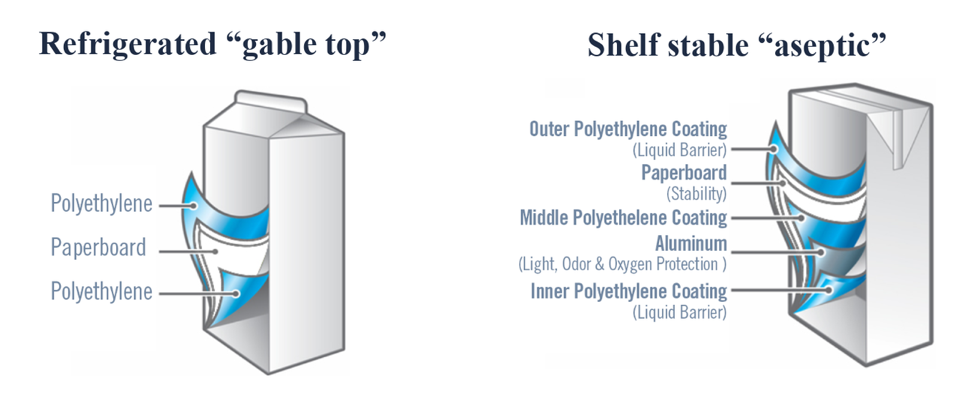
Source: Carton Council
Tetra Pak is just one example. Many other products are allowed to have recyclable labels on them, and yet they rarely end up being recycled. Even though that’s the case, the companies that create these products want us to believe that recycling is good and vital for us. By doing that, they keep us wanting to buy their products. Because for as long as we are incredibly eco-friendly, we will continue to purchase their products, knowing that what we throw them in the big blue bin will that will send them to the recycling plants. It’s a win-win situation, the companies make money, and we are all eco-friendly in the end. But, as you can see, we aren’t, not really.
So, if so much of the garbage we make ends up in a landfill or the ocean, is there even a point to recycling? Yes, there is.
Key Takeaways
Even though the big truth is that so little of what’s supposed to be recycled ends up being recycled, it’s still vital for us to keep recycling our waste. None of this changes the fact that a lot of the garbage we create ends up in the recycling plant. And even though a large portion of it doesn’t, that shouldn’t mean we should stop trying altogether. The little effort we make still means something. And it’s not like we can stop buying everything just because we know it might not get recycled.
What we really need is for the FTC to start making better rules. We need those guidelines to be stricter so that companies are forced to create products that will always end up recycled. We also need them to enforce real penalties and impose massive fees for those that don’t follow the guidelines.
However, we also need companies to start finding ways to deal with the plastic and other waste they create that ends up in the landfills and oceans. They are the ones causing the biggest problem with the waste crisis we have today.
We also need consumers to buy less plastic. Switch to cans and glass whenever you can. Almost everything you can buy in plastic is available in glass or cans. Ask your retailer to purchase more can and glass beverages. You have responsibility too.
I feel that the first step towards real change is for all of us to learn the whole truth. Once we do, we can start spreading it. The more people who know the truth and react to it, the more the government and the companies can work towards fixing the mess they created.
In the meantime, you should keep following my blog because more stories like this one are going to follow!
Why Large Food and Beverage Companies Fail at New Product Development
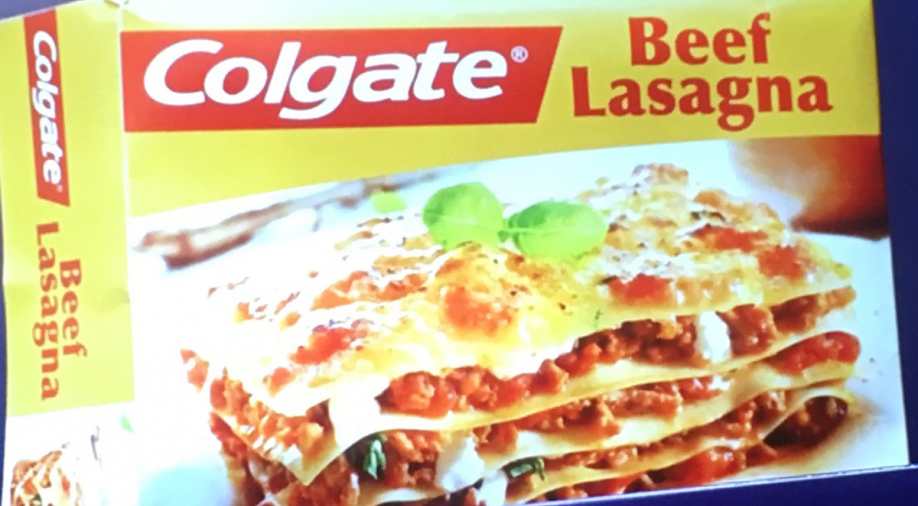
In the food and beverage industry, even the giants can have a hard time developing and launching new products. However, their troubles are usually entirely different from that of a food and beverage entrepreneur. These huge companies have all the advantages of troves of data, experienced marketing departments, and plenty of resources to make the new product succeed. But they still fail.
In fact, according to multiple sources, approximately 80% of new products developed by large food and beverage companies end up failing. This is a staggering statistic that perfectly showcases the scope of the problem. But why does this happen so often, and is there a solution that can turn this trend around? Let’s have a closer look at why large food and beverage companies fail at product development:
Big Companies and Innovation Struggles
As technology began to advance, most innovation in the food and beverage sector was tied to finding ways to prolong a product’s shelf life or get it to consumers faster. But today the market’s needs and appetites have grown way beyond this, especially as the consumers’ attitude towards food and nutrients changes.
Consumers are becoming more aware that what they eat and drink has a significant impact on their health, so they are seeking out the best possible options. That’s why large companies that don’t have a lineup of healthy, good-for-you products are finding themselves in a problem when developing new products. And unfortunately, the vast majority of big food and beverage companies falls into this group, as the trailblazers of new healthier trends are usually smaller businesses and food entrepreneurs.
To Reformulate or to Relaunch?
According to IRI, of 10,000 new products that are launched every year, as much as 90% fails to achieve sales goals. In fact, many of them aren’t even around two or three years down the road, which makes launching entirely new products a risky undertaking for most companies. In most cases, they decide to reformulate or relaunch their existing products to make them more appealing to the changing public opinion on how our food and beverages should be.
If we take a look at Consumer Good Forum statistics, we can see that 66% of their members have reported having reformulated some of their products in 2016. Some of the most common changes implemented in product reformulation are reducing the amount of sugar and sodium, adding vitamins, or using healthier alternatives to certain staples (such as switching to whole grains).
Declining Sales and New Product Launch Fails
The main reason for relaunching existing products is declining sales. Between 2012 and 2015, the U.S. retail sales of the top 25 food and beverage giants have gone down from 66% to 63%, according to the study Is Big Food In Trouble by The Hartman Group and A.T. Kearney.
However, the need for change hasn’t prevented new product development and launch fails. A few reasons stand out. There were cases of companies making the wrong conclusions on what the market needed, developing products that didn’t fit with their brand image, and choosing the wrong trends to chase.
Wrong Conclusions on Market Wants and Needs
Despite having a wealth of data at their disposal regarding products, taste tests, and market research, sometimes companies just fail to ask themselves whether someone will be willing to buy the product and at what price.
For example, let’s have a look at Coca-Cola’s C2, their attempt from 2004 to gain the favor of a target market that’s been avoiding their products. C2 was meant to be a middle ground between classic Coke and Diet Coke. The idea was to capture the interest of 20- to 40-year-old men, who were mindful of their calorie intake while avoiding Diet Coke because of its general appeal to women.
However, C2 only had half the calories and carbs of a classic Coke — it wasn’t a complete no-calorie version like Diet Coke. As such, its qualities weren’t distinctive enough to allow it to stand out in the market, even if it did (in theory) need a similar option. The target consumers simply didn’t find it appealing enough.
Just because a Company spends a lot of money on or does a lot of consumer research doesn’t mean they are correct. If that were true, Coke and Pepsi, and other conglomerates like them, would never fail. But that is not the case.
Research needs to be combined with gut instinct to be successful. If you look at the most successful, “new”, innovative and disruptive brands, none of them used expensive and extensive consumer research in the beginning:
Amazon
Bai
Boom Chicka Pop
Deep River Snacks
Dirty Lemon
Dirty Potato Chips
Fiji
GT Kombucha
Kettle Chips
Keurig
Liquid Death
Mama Chia
Monster
Naked Juice
Netflix
Perky Jerky
Pirate’s Booty
Red Bull
Smart Water
Sophie’s Kitchen
Starbucks
Vita Coco
Vitamin Water
Voss
Whole Foods
Zico
The Product Doesn’t Fit with the Brand
Big companies also face difficulties trying to expand their lines or launch new ones with products that stand out from what they were known to do. When many companies first reformulate their existing lines and launch new products that are more in line with the new brand image, there are sometimes cases where the consumers aren’t prepared for the change.
More often than not, these fails come from a brand branching out into the food and beverage industry — such as Colgate’s frozen lasagna or Cosmopolitan’s yogurt. However, that isn’t to say that food and beverage giants are immune to developing products that just don’t fit with the brand image, whether that’s in a big or a small way.
Trying to Capitalize on a Trend
Finally, one of the biggest and most frequent causes of new product development fails is chasing the wrong trends or fads. When a company is too early or too late to the current consumer preferences party, it inevitably brings low interest and even lower sales. Trends like low-carb diets have proven fleeting, which is something Coca-Cola has felt with their C2 release as well.
However, some notable innovations are still prevalent in the food and beverage industry. Alternatives to dairy, Greek yogurt, free-from foods, plant-based protein suitable for a vegan diet, etc. have mostly been brought on by smaller companies or entrepreneurs. It’s therefore essential for food and beverage giants to correctly interpret their market data, and accurately predict the coming market trends that are here to stay.
Key TakeawaysBig food and beverage companies and smaller businesses alike need to watch for industry insights and anticipate market trends. Staying true to your brand is more important than ever, as that prevents consumer confusion or disappointment. However, it’s even more crucial to adapt to the changes in the industry and the growing market demand for healthier food and drink options.
Retail & Grocery: Amazon.com, Inc.
In only 24 years, Amazon.com Inc. has evolved from a little online bookstore to the most extensive digital retailer in the world. Generating $177.9 billion in net sales from its over 300 million users in 2017, it is a giant in many markets, including retail and groceries.
As the company remains true to its four guiding principles – customer obsession rather than competitor focus, passion for invention, commitment to operational excellence, and long-term thinking – its sell-through position strengthened with inroads in new categories. Among other things, it has led Amazon to acquire Whole Foods Market as its subsidiary.
In 2018, the growth trend continues. Despite demanding more dollars for marketing from vendors, Amazon has met planned sales expectations for the second quarter for many categories (14 out of 25), exceeding plans in 9 categories in the changing natural food industry.
Orders from Whole Foods mainly surpassed its planned expectations due to deep discounts for Amazon Prime members, while higher marketing fees discouraged vendors from investing in promotion for their products. As a result, more vendors have opened Seller Central accounts, which allowed them to manage costs better and simplify product launch, and increased direct shipment from Prime Now.
Those are only two critical areas to watch. But if you want to learn more about other changes in 2018, there are other trends to look out for in retail and grocery as the year draws to an end at Amazon.
A Growing Amazon Prime Membership
In May 2018, the cost of Amazon Prime membership rose to $119. And while some vendors viewed it negatively, most don’t expect any significant impact on service use. It comes down to the advanced features included in the membership to its users, including Amazon’s marketing tools and expanded offering on Amazon.com platform. A natural food vendor even said:
“Amazon keeps offering more and more benefits [for Prime members], so I don’t think [the higher annual fee] will have any impact. Prime members value that service so much.”
And payment fees and commissions to Amazon were also raised in most vendor contracts. Because of the 10% increase in rates, all vendor contracts from 2017 are invalid, and sellers need to sign a new 2018 contract.
But it’s important to remember the terms in the new contract are negotiable. And while vendors do encounter additional fees, like fulfillment fees, inventory fees for storage, out-of-stock penalties, and accrual fees, it’s important to accept Amazon’s demands and negotiate a 2018 contract.
Amazon Competition Is Low
Amazon’s main competitors are Walmart.com and The Kroger Co., closely followed by Walmart’s Jet.com, Walmart brick-and-mortar stores, Target Corp. and Thrive Market Inc. However, most vendors agree that no e-commerce platform or store chain can compete with the retail giant when it comes to grocery retail.
However, Kroger and Target are making breakthroughs in grocery assortments and improving the shopping experience for their consumers. It seems to be generating interest among some vendors, as Kroger, for example, is placing standard category managers in charge of specific category managers and buyers. But it is yet to generate the amount of attention required to disrupt Amazon’s large-scale operation.
Amazon Prime Is Helping Whole Foods
Amazon’s Prime benefits (10% discount on all items and steep “Prime Member Deals”) helped increase sales during the second quarter in 2018 at Whole Foods Markets. The Amazon subsidiary saw an initial redemption rate between 60%-70% in June, but the figure is likely to reach 80% by year-end.
Prime Deals and promotion also aided vendors in their efforts. Many natural and organic vendors stated their Whole Food orders exceeded expectations, with almost all of them meeting their planned goals.
Despite this, vendors will bear the cost of those mandatory 10% discounts, which may result in several sellers reducing budgets allocated for promotion. However, for most of them, the price will be worth the effort if Amazon can deliver the right sales volume with Prime discounts. And according to the amount of sales Amazon made – it can.
Grocery Sales on Amazon.com and Fresh
In 2018, Amazon has made a lot of efforts to increase its foothold into groceries. It has led natural and organic food vendors to a very successful quarter with their sale of non-perishables on Amazon.com, than of perishable items sold on AmazonFresh. Also, over 65% of vendors exceeded planned order figures, which led some of them to improve their use of Amazon Marketing Services (AMS).
More and more vendors are turning to e-commerce SEO and search terms with AMS for marketing, than, for example, offering customer incentive programs such as coupons. On the other hand, vendor spending on ads has also increased but not significantly. Still, the combined efforts of both marketing tactics resulted in a higher revenue stream than in previous years.
In contrast, vendors who used AmazonFresh did not meet expectations. Their sales quotas fell below plan. They attribute this to significant reorganizations within the company, as AmazonFresh and Prime Now are hiring more staff in Seattle and distribution networks get realigned to handle perishable goods.
New Expansion Plans
Another critical factor influencing all of these changes is Amazon’s plan for rapid expansion. In short order, AmazonFresh is planned to move from the current eight-hour delivery format to a new two-hour delivery, which will make it stand out even more from the competition.
A new app is also set to be launched shortly, as Amazon wants to consolidate all of its grocery platforms in one place. But, until now, there is yet to be an integration of all purchases into one system, as Amazon.com, AmazonFresh, Prime Now, and Amazon Go remain separate from Whole Foods.
Finally, Amazon is moving towards direct shipments to reduce the reliance on United Natural Foods Inc. The plan is to allow room for rapid expansion of Prime Now with a hub-and-spoke system that will revamp warehouses and transportation logistics for perishables.
Follow Trends and News
Keep up to date with the latest innovations, trends, news, and so much more in the retail and food and beverage. Stay on top of best practices when it comes to marketing and sales, and gain insight from inside the industry.
With new developments each week, a piece of news, a new strategy or business model might catch your eye and lead you to apply it to your business to –
Seize the opportunity! Grow to scale! Realize the potential of your business! Become a leading influence on the market!
For more information about Cascadia Managing Brands, please go to www.cascadiamanagingbrands.com
